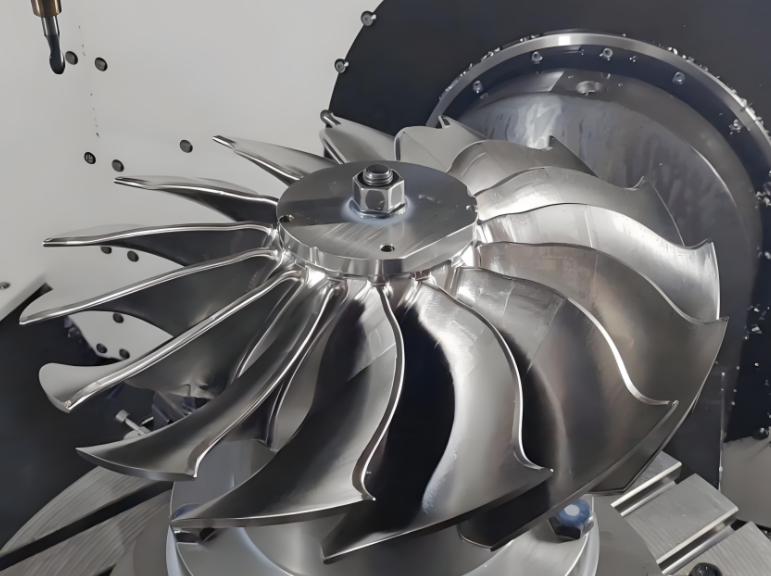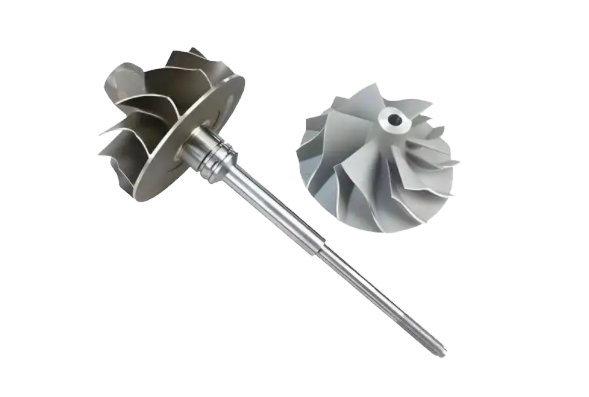Investment casting, also known as precision casting, is a critical manufacturing process for producing high-precision rotor blades used in aerospace, power generation, and industrial turbines. This guide provides a detailed, technical overview of optimization techniques for investment casting, emphasizing practical methods, specific parameters, and systematic approaches to achieve high-quality rotor blades. The focus is on enhancing dimensional accuracy, surface integrity, and material properties while maintaining process efficiency.
Understanding Investment Casting for Rotor Blades
Investment casting involves creating a wax pattern, coating it with a ceramic shell, melting out the wax, and pouring molten metal into the mold to form the final component. For rotor blades, this process is essential due to their complex geometries, tight tolerances, and high-performance material requirements, such as nickel-based superalloys or titanium alloys. Optimization focuses on improving mold design, material selection, casting parameters, and post-processing to meet stringent industry standards.
The process begins with a precise wax pattern, which is typically injected into a metal die. The ceramic shell is built through multiple dipping and drying cycles, followed by dewaxing and firing to prepare the mold for casting. Molten metal is poured under controlled conditions, and after solidification, the ceramic shell is removed, leaving the cast rotor blade for finishing operations.
Key Optimization Techniques
Optimizing investment casting for rotor blades requires a systematic approach to control variables such as mold quality, pouring conditions, and post-casting treatments. The following techniques are critical for achieving consistent results.

Mold Design and Wax Pattern Precision
The quality of the wax pattern directly affects the final casting. Precision in mold design ensures dimensional accuracy and minimizes defects like shrinkage or porosity. Key considerations include:
- Wax Injection Parameters: Maintain wax temperature between 65°C and 75°C and injection pressure between 0.5 MPa and 1.2 MPa to ensure uniform filling and minimize wax distortion.
- Die Maintenance: Regularly inspect and polish metal dies to prevent surface imperfections that could transfer to the wax pattern.
- Gating System Design: Optimize the gating system to ensure smooth metal flow and minimize turbulence. A gate diameter of 5-8 mm and a sprue height of 50-100 mm are typical for rotor blade casting to reduce inclusions.
Using computer-aided design (CAD) and simulation software, such as ProCAST or MagmaSoft, allows engineers to predict mold filling behavior and identify potential defects before production. Simulation results can guide adjustments to gate placement or runner design to enhance mold fillability.
Ceramic Shell Optimization
The ceramic shell must withstand high temperatures and mechanical stresses during casting. Optimization involves selecting appropriate materials and controlling the shell-building process.
- Slurry Composition: Use a zircon-based primary slurry with a silica binder for high-temperature stability. Maintain slurry viscosity at 20-30 seconds (Zahn cup #4) to ensure uniform coating.
- Layering Process: Apply 6-8 ceramic layers, with drying times of 4-6 hours per layer at 22-25°C and 40-50% relative humidity to prevent cracking.
- Shell Preheating: Preheat the ceramic mold to 900-1100°C before pouring to reduce thermal shock and improve metal flow.
Automated dipping systems can improve consistency in shell thickness, typically maintained at 6-10 mm, depending on blade size. Regular quality checks, such as X-ray inspection of the shell, help detect internal cracks or weak spots.
Pouring and Solidification Control
Controlling the pouring and solidification process is critical to minimizing defects like shrinkage porosity, gas entrapment, or hot tearing. Key parameters include:
| Parameter | Recommended Range | Purpose |
|---|---|---|
| Pouring Temperature | 1450-1550°C (for nickel-based alloys) | Ensures complete mold filling and reduces viscosity |
| Mold Temperature | 900-1100°C | Minimizes thermal gradients and prevents cracking |
| Pouring Rate | 0.5-1.0 kg/s | Prevents turbulence and gas entrapment |
| Vacuum Level | 10^-2 to 10^-3 mbar | Reduces oxidation and gas porosity |
Vacuum casting is often used for rotor blades to minimize oxidation, especially for reactive alloys like titanium. Directional solidification techniques, such as using a chill plate or controlled cooling rates (e.g., 5-10°C/min), can enhance grain structure and improve fatigue resistance.
Material Selection and Alloy Control
Rotor blades typically use nickel-based superalloys (e.g., Inconel 718) or titanium alloys (e.g., Ti-6Al-4V) due to their high strength and heat resistance. Optimization involves:
- Alloy Purity: Ensure raw materials have impurity levels below 0.01% for elements like sulfur or phosphorus to prevent embrittlement.
- Melt Treatment: Use argon shielding or vacuum induction melting to reduce inclusions. Maintain melt superheat at 50-100°C above the alloy’s liquidus temperature.
- Grain Refinement: Add grain refiners like cobalt-aluminate to promote equiaxed grain structures, improving mechanical properties.
Regular chemical analysis of the melt, using spectrometry, ensures composition consistency. For example, nickel-based alloys should maintain 50-55% Ni, 17-21% Cr, and 4.75-5.5% Nb for Inconel 718.
Post-Casting Processing
Post-casting operations, such as heat treatment and Oberflächenveredelung, are essential for achieving the desired mechanical properties and surface quality.
- Wärmebehandlung: Apply solution annealing at 980-1050°C for 1-2 hours, followed by aging at 720-760°C for 8-16 hours to optimize the microstructure of nickel-based alloys.
- Surface Finishing: Use abrasive flow machining or chemical etching to achieve surface roughness (Ra) of 0.8-1.6 µm, critical for aerodynamic performance.
- Inspektion: Conduct non-destructive testing (NDT), such as fluorescent penetrant inspection (FPI) or computed tomography (CT), to detect internal defects like porosity or inclusions.
HIP (Hot Isostatic Pressing) at 1200°C and 100-150 MPa for 3-4 hours can reduce internal voids, enhancing fatigue life.
Practical Considerations for Process Consistency
Achieving consistent results requires rigorous process control and documentation. Key practices include:
- Standard Operating Procedures (SOPs): Develop detailed SOPs for each stage, including wax injection, shell building, and pouring, to ensure repeatability.
- Operator Training: Train personnel on equipment calibration and defect recognition to maintain process stability.
- Data Logging: Use sensors to monitor parameters like mold temperature, pouring rate, and vacuum level in real-time, storing data for quality traceability.
Statistical process control (SPC) can be applied to track variables like shell thickness or casting defects, using control charts to identify deviations early.

Case Study: Parameter Optimization Example
Consider a rotor blade cast from Inconel 718 with a length of 200 mm and a maximum thickness of 10 mm. Initial trials showed porosity defects and dimensional inaccuracies. Optimization involved:
| Issue | Action Taken | Result |
|---|---|---|
| Porosity in blade root | Increased vacuum level to 10^-3 mbar and adjusted pouring rate to 0.7 kg/s | Reduced porosity by 80% |
| Dimensional deviation | Optimized wax injection pressure to 0.8 MPa and die temperature to 70°C | Improved dimensional accuracy to ±0.05 mm |
These adjustments, validated through X-ray inspection and dimensional checks, resulted in a defect-free blade meeting aerospace tolerances.
Schlussfolgerung
Optimizing investment casting for rotor blades involves a systematic approach to mold design, ceramic shell construction, pouring, material control, and post-processing. By carefully controlling parameters like wax injection pressure, pouring temperature, and heat treatment conditions, manufacturers can achieve high-precision, defect-free rotor blades. Implementing robust process controls and leveraging simulation tools further enhances reliability and efficiency. These techniques, grounded in technical expertise and practical experience, ensure rotor blades meet the stringent demands of aerospace and industrial applications.
